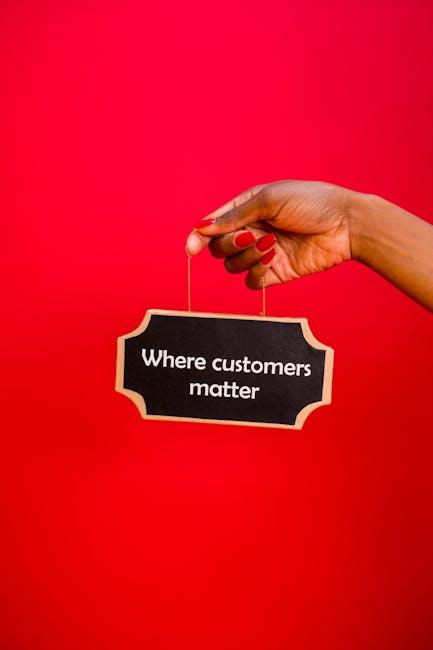Advanced Strategies for Maximizing Customer Lifetime Value
In today’s competitive marketplace, maximizing Customer Lifetime Value (CLV) is crucial for sustainable business growth. Companies that can successfully increase the value generated from each customer over time realize higher profitability, stronger brand loyalty, and more predictable revenue streams. This article dives into advanced strategies to help you not only boost CLV but also build meaningful, long-term relationships with your customers.
What is Customer Lifetime Value and Why It Matters?
Customer Lifetime Value is a predictive metric that estimates the total revenue a business can expect from a single customer account throughout their entire relationship. Understanding and maximizing CLV enables businesses to optimize marketing spend, improve retention, and increase customer satisfaction.
Benefits of Maximizing Customer Lifetime Value
- Improved Profit Margins: Retaining existing customers is less expensive than acquiring new ones.
- Predictable Revenue Growth: A high CLV facilitates better financial planning and scalability.
- Enhanced Customer Loyalty: Long-term customers tend to advocate for your brand.
- Competitive Edge: Effective CLV strategies differentiate your business in crowded markets.
Advanced Strategies to Maximize Customer Lifetime Value
1. Leverage Data-Driven Personalization
Personalization powered by customer data is one of the most effective ways to boost CLV. Use behavioral data, purchase history, and preference analytics to tailor experiences uniquely to each customer.
- Implement AI-driven product recommendations based on browsing and buying patterns.
- Craft dynamic email campaigns targeting customer segments with personalized offers.
- Use personalized landing pages or app interfaces to increase engagement.
2. Optimize Customer Segmentation
Divide your customers into distinct groups based on spending habits, demographics, or engagement levels to tailor marketing efforts more effectively.
- Identify high-value customers and create exclusive loyalty perks.
- Develop activation campaigns for dormant customers to re-engage them.
- Customize messaging frequency and content based on segment responsiveness.
3. Develop Tiered Loyalty Programs
Not all customers are the same. Creating a tiered loyalty program incentivizes repeat purchases and rewards top spenders, increasing their CLV.
| Tier | Benefits | Requirements |
|---|---|---|
| Silver | 5% discount, early access to sales | Spend $500+ per year |
| Gold | 10% discount, free shipping | Spend $1,500+ per year |
| Platinum | 15% discount, VIP support, exclusive events | Spend $3,000+ per year |
4. Enhance Customer Experience (CX) Continuously
An exceptional customer experience can significantly increase retention rates and, consequently, CLV. Focus on removing friction points and creating memorable interactions at every touchpoint.
- Use feedback loops such as surveys and reviews to gather actionable insights.
- Implement omnichannel support, including chatbots, live chat, and social media responsiveness.
- Focus on seamless mobile and desktop experiences with fast load times and intuitive navigation.
5. Use Predictive Analytics to Identify Trends
Predictive analytics can anticipate customer churn, adjust marketing outreach, and optimize pricing strategies for maximizing CLV.
- Analyze customer behavior patterns to identify churn risk early.
- Tailor offers to win-back customers before they leave.
- Adjust dynamic pricing based on predictive buying signals to increase sales.
6. Implement Subscription and Membership Models
Subscription services ensure steady revenue and deepen customer commitment. This approach can drastically increase average CLV by locking customers into long-term relationships.
- Offer personalized subscription tiers tailored to customer usage patterns.
- Provide members-only perks such as exclusive content or discounts.
- Use flexible cancellation policies to reduce subscription churn.
Practical Tips to Get Started Today
- Audit Existing CLV Metrics: Run a thorough analysis to understand your current CLV baseline and identify gaps.
- Invest in CRM Tools: Leverage customer relationship management platforms that enable detailed segmentation and personalization.
- Cross-Department Collaboration: Align marketing, sales, and customer service teams to create a unified customer experience.
- Focus on Content Marketing: Deliver valuable content that educates and engages customers throughout their lifecycle.
Real-World Case Study: How Company X Increased CLV by 35%
Company X, a mid-sized e-commerce retailer, implemented the above strategies with impressive results:
| Strategy | Implementation | Outcome |
|---|---|---|
| Personalization | AI-driven product recommendations | 20% increase in average order value |
| Loyalty Program | Three-tier rewards system | 25% increase in repeat purchase rate |
| Predictive Analytics | Early churn detection campaigns | 15% reduction in churn |
| Subscription Model | Monthly membership club | Stable monthly recurring revenue added |
By combining multiple approaches, Company X drove a 35% increase in overall Customer Lifetime Value within one year, leading to higher profitability and stronger brand advocacy.
Conclusion: Building Long-Term Customer Relationships for Maximum Value
Maximizing Customer Lifetime Value requires a strategic blend of data-driven marketing, personalized experiences, and innovative business models. By implementing advanced techniques like predictive analytics, tiered loyalty programs, and subscription services, businesses can significantly enhance CLV and secure sustainable growth.
Start with understanding your customers deeply, invest in technology that supports personalization, and continuously refine your approach to create memorable experiences that keep customers coming back. In the age of customer-centric business, maximizing lifetime value isn’t just an option-it’s an imperative.











